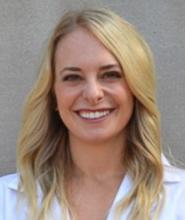Burden of Common Skin Diseases in the Caribbean and Potential Correlation With Socioeconomics
Rachel Giesey, DO, Case Western Reserve University, Cleveland, Ohio, and University Hospitals Cleveland Medical Center, Cleveland, Ohio
Disclosures: None.
There is a significant burden of dermatoses on a global scale, including the Caribbean, exemplified by disproportionately high corresponding disability adjusted life years (DALYs). Promising steps are being taken in the Caribbean, such as the World Bank Group’s ongoing financial support for Caribbean Community (CARICOM) countries, which has reached nearly $2 billion with a focus on strengthening resilience and financial protection against disasters. Despite this, additional research is needed to help guide dermatologists interested in reducing global health disparities in this region to create more impactful and sustainable interventions.
Objective
This observational study aims to measure the burden of common skin diseases in the Caribbean and the potential relationship with a country’s socioeconomic status.
Methods
For this study, we selected Global Burden of Disease Study (GBD) data sets analyzing the most recent DALYs of the most common dermatoses in 2017 among 18 Caribbean countries, along with the Caribbean as a region, and the United States for comparison. Three categories of dermatoses were analyzed by country: neoplastic, infectious, and inflammatory. Each country was assigned a ranking from 1 (highest DALYs) to 20 (lowest DALYs) for each disease. The principal country-level economic factor used to measure socioeconomic status was gross domestic product (GDP) per capita in 2017 from the International Monetary Fund and the World Bank. Statistical analysis of correlations between country wealth and disease was performed using a 2-tailed linear regression. Level of significance was set at P<.05.
Results
Countries were ordered by column from left (least wealthy) to right (most wealthy). To generate a heat table, the countries were ranked by DALYs (ranging from 1 [highest disease burden] to 20 [lowest burden]) for each skin disease. There was a statistically significant inverse relationship between country wealth and cutaneous neoplasms (melanoma, nonmelanoma skin cancers, and lip/oral cancers), as well as some inflammatory dermatoses (contact dermatitis, psoriasis, and pruritus). In contrast, there was a statistically significant positive correlation between country wealth and dermatology-related infectious diseases (scabies, viral skin infections, syphilis, human immunodeficiency virus/AIDS, and tuberculosis) and some other inflammatory dermatoses (urticaria, asthma, and atopic dermatitis).
Conclusion
Dermatologists interested in a particular disease may elect to focus time and resources in a Caribbean country with the highest respective DALYs, or dermatologists interested in traveling to a particular country may find the most impactful and sustainable interventions by focusing on the dermatoses with highest DALYs in that country. The relationship between GDP and health expenditure on dermatologic disease is complex, and the influence of income levels on this causal relationship is unclear. Further work is necessary to more consistently assess the impact of income on common dermatoses in low- and middle-income countries across the globe.

